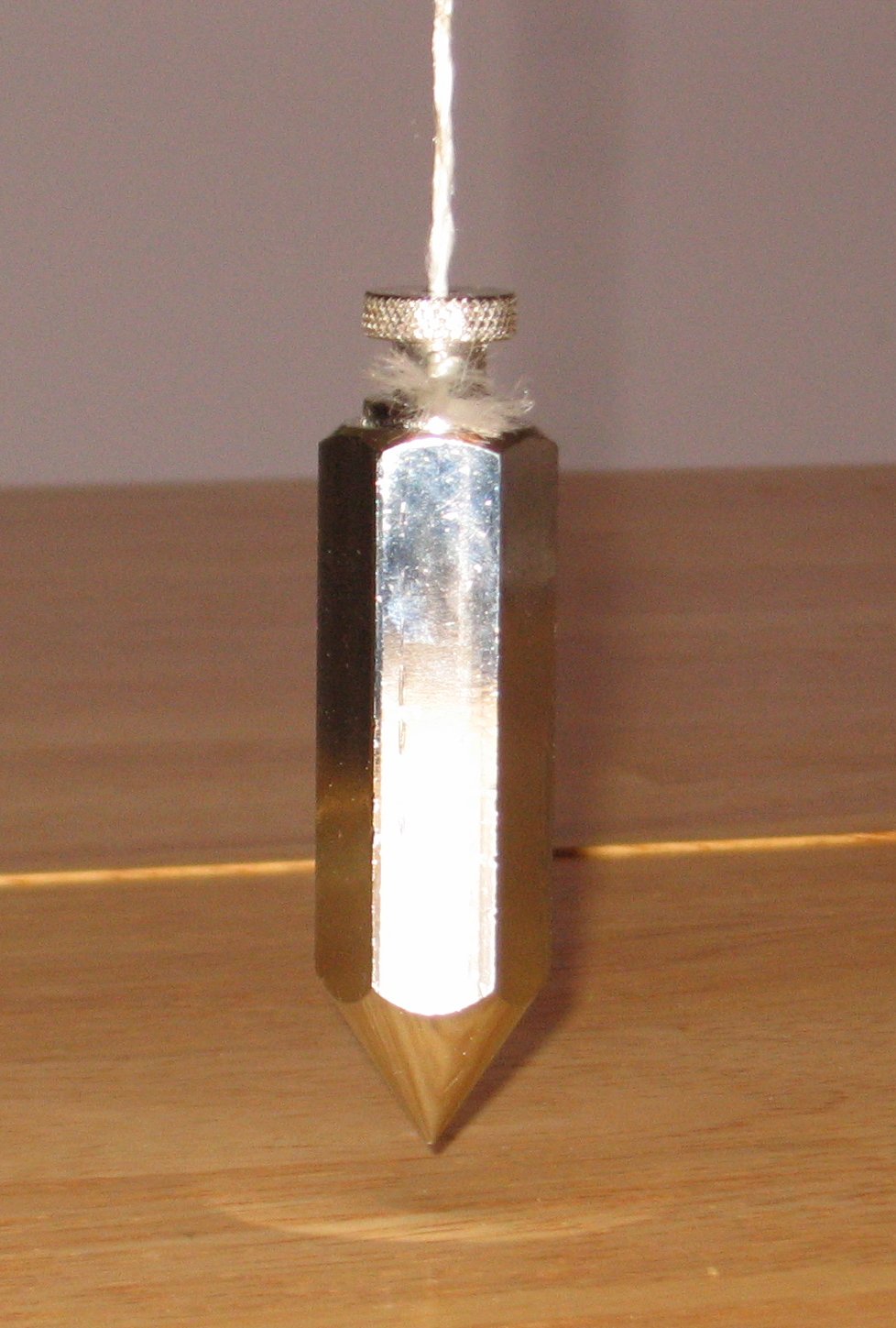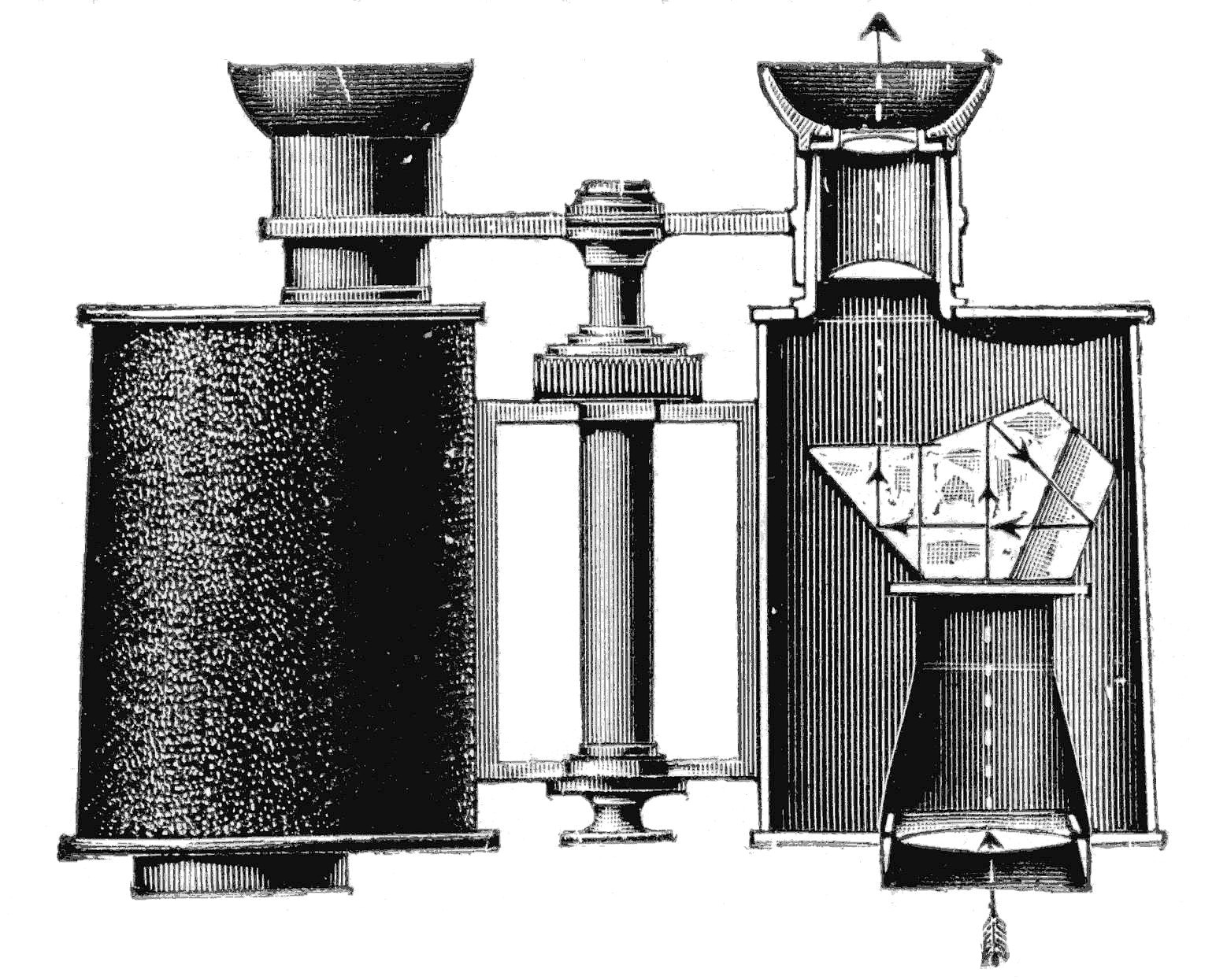|
Optical Square
The optical square uses a pentaprism to reflect and refract a beam or sighting 90 degrees, it is used in pairs in surveying and in a singular block in metrology. In optical square A Horizon glass is placed at an angle of 120° with the horizon sight. The Index glass is placed at an angle of 105° with the Index sight. Angle between Index glass and Horizon glass is 45°. Metrology Used with an autocollimator or angle dekkor and mirror it can be used for machine tool axis squareness checking and for measuring the squareness of surfaces. It has two mirrors at 45 degree to each other. One is half-silvered, called horizon glass, and other is fully silvered, called index glass. It measures angle by reflection. Two prisms can be used as an optical square. Optical square in surveying In surveying it is used both as a hand held tool for sighting between two poles (often with a plumb bob hung from the handle) and also mounted on a Jacob's staff The term Jacob's staff is used to ... [...More Info...] [...Related Items...] OR: [Wikipedia] [Google] [Baidu] |
Pentaprism
A pentaprism is a five-sided reflecting prism used to deviate a beam of light by a constant 90°, even if the entry beam is not at 90° to the prism. The beam reflects inside the prism ''twice'', allowing the transmission of an image through a right angle without inverting it (that is, without changing the image's handedness) as an ordinary right-angle prism or mirror would. The reflections inside the prism are not caused by total internal reflection, since the beams are incident at an angle less than the critical angle (the minimum angle for total internal reflection). Instead, the two faces are coated to provide mirror surfaces. The two opposite transmitting faces are often coated with an antireflection coating to reduce spurious reflections. The fifth face of the prism is not used optically but truncates what would otherwise be an awkward angle joining the two mirrored faces. In cameras A variant of this prism is the roof pentaprism which is commonly used in the viewfinder ... [...More Info...] [...Related Items...] OR: [Wikipedia] [Google] [Baidu] |
Prism (optics)
An optical prism is a transparent optics, optical element with flat, polished surfaces that are designed to refraction, refract light. At least one surface must be angled — elements with two parallel surfaces are ''not'' prisms. The most familiar type of optical prism is the triangular prism, which has a triangular base and rectangular sides. Not all optical prisms are prism (geometry), geometric prisms, and not all geometric prisms would count as an optical prism. Prisms can be made from any material that is transparent to the wavelengths for which they are designed. Typical materials include glass, acrylic glass, acrylic and fluorite#Optics, fluorite. A dispersive prism can be used to break white#White light, white light up into its constituent spectral colors (the colors of the rainbow) as described in the following section. Other types of prisms noted below can be used to reflection (physics), reflect light, or to split light into components with different polarization (w ... [...More Info...] [...Related Items...] OR: [Wikipedia] [Google] [Baidu] |
Metrology
Metrology is the scientific study of measurement. It establishes a common understanding of units, crucial in linking human activities. Modern metrology has its roots in the French Revolution's political motivation to standardise units in France when a length standard taken from a natural source was proposed. This led to the creation of the decimal-based metric system in 1795, establishing a set of standards for other types of measurements. Several other countries adopted the metric system between 1795 and 1875; to ensure conformity between the countries, the Bureau International des Poids et Mesures (BIPM) was established by the Metre Convention. This has evolved into the International System of Units (SI) as a result of a resolution at the 11th General Conference on Weights and Measures (CGPM) in 1960. Metrology is divided into three basic overlapping activities: * The definition of units of measurement * The realisation of these units of measurement in practice * Traceabi ... [...More Info...] [...Related Items...] OR: [Wikipedia] [Google] [Baidu] |
Jacob's Staff
The term Jacob's staff is used to refer to several things, also known as cross-staff, a ballastella, a fore-staff, a ballestilla, or a balestilha. In its most basic form, a Jacob's staff is a stick or pole with length markings; most staffs are much more complicated than that, and usually contain a number of measurement and stabilization features. The two most frequent uses are: * in astronomy and navigation for a simple device to measure angles, later replaced by the more precise sextants; * in surveying (and scientific fields that use surveying techniques, such as geology and ecology) for a vertical rod that penetrates or sits on the ground and supports a compass or other instrument. The simplest use of a Jacob's staff is to make qualitative judgements of the height and angle of an object relative to the user of the staff. In astronomy and navigation In navigation the instrument is also called a cross-staff and was used to determine angles, for instance the angle between the ... [...More Info...] [...Related Items...] OR: [Wikipedia] [Google] [Baidu] |
Plumb Bob
A plumb bob, plumb bob level, or plummet, is a weight, usually with a pointed tip on the bottom, suspended from a string and used as a vertical reference line, or plumb-line. It is a precursor to the spirit level and used to establish a vertical datum. It is typically made of stone, wood, or lead, but can also be made of other metals. If it is used for decoration, it may be made of bone or ivory. The instrument has been used since at least the time of ancient EgyptDenys A. Stocks. Experiments in Egyptian archaeology: stoneworking technology in ncient Egypt'. Routledge; 2003. . p. 180. to ensure that constructions are "plumb", or vertical. It is also used in surveying, to establish the nadir with respect to gravity of a point in space. It is used with a variety of instruments (including levels, theodolites, and steel tapes) to set the instrument exactly over a fixed survey marker or to transcribe positions onto the ground for placing a marker. Etymology The ''plu ... [...More Info...] [...Related Items...] OR: [Wikipedia] [Google] [Baidu] |
Pole (surveying)
In surveying, a pole is bar made of wood or metal and normally held vertical, upon which different instruments can be mounted: a prism, a GPS device, etc. It may be manufactured with a predetermined length (e.g., 2 meters) or may be graduated for different heights or stages. Technology advances have introduced tilt-compensation capability into survey poles, that allow the surveyor to measure points above ground or when the pole is off-vertical. References- See also * Level staff {{short description, Graduated rod used to measure differences between heights A level staff, also called levelling rod, is a graduated wooden or aluminium rod, used with a levelling instrument to determine the difference in height between points ... Surveying instruments {{civil-engineering-stub ... [...More Info...] [...Related Items...] OR: [Wikipedia] [Google] [Baidu] |
Surveying
Surveying or land surveying is the technique, profession, art, and science of determining the terrestrial two-dimensional or three-dimensional positions of points and the distances and angles between them. A land surveying professional is called a land surveyor. These points are usually on the surface of the Earth, and they are often used to establish maps and boundaries for ownership, locations, such as the designed positions of structural components for construction or the surface location of subsurface features, or other purposes required by government or civil law, such as property sales. Surveyors work with elements of geodesy, geometry, trigonometry, regression analysis, physics, engineering, metrology, programming languages, and the law. They use equipment, such as total stations, robotic total stations, theodolites, GNSS receivers, retroreflectors, 3D scanners, LiDAR sensors, radios, inclinometer, handheld tablets, optical and digital levels, subsurface locators, d ... [...More Info...] [...Related Items...] OR: [Wikipedia] [Google] [Baidu] |
Reflection (physics)
Reflection is the change in direction of a wavefront at an interface between two different media so that the wavefront returns into the medium from which it originated. Common examples include the reflection of light, sound and water waves. The ''law of reflection'' says that for specular reflection (for example at a mirror) the angle at which the wave is incident on the surface equals the angle at which it is reflected. In acoustics, reflection causes echoes and is used in sonar. In geology, it is important in the study of seismic waves. Reflection is observed with surface waves in bodies of water. Reflection is observed with many types of electromagnetic wave, besides visible light. Reflection of Very high frequency, VHF and higher frequencies is important for radio transmission and for radar. Even hard X-rays and gamma rays can be reflected at shallow angles with special "grazing" mirrors. Reflection of light Reflection of light is either ''Specular reflection, specular'' (mi ... [...More Info...] [...Related Items...] OR: [Wikipedia] [Google] [Baidu] |
Pentaprism
A pentaprism is a five-sided reflecting prism used to deviate a beam of light by a constant 90°, even if the entry beam is not at 90° to the prism. The beam reflects inside the prism ''twice'', allowing the transmission of an image through a right angle without inverting it (that is, without changing the image's handedness) as an ordinary right-angle prism or mirror would. The reflections inside the prism are not caused by total internal reflection, since the beams are incident at an angle less than the critical angle (the minimum angle for total internal reflection). Instead, the two faces are coated to provide mirror surfaces. The two opposite transmitting faces are often coated with an antireflection coating to reduce spurious reflections. The fifth face of the prism is not used optically but truncates what would otherwise be an awkward angle joining the two mirrored faces. In cameras A variant of this prism is the roof pentaprism which is commonly used in the viewfinder ... [...More Info...] [...Related Items...] OR: [Wikipedia] [Google] [Baidu] |
Machine Tool
A machine tool is a machine for handling or machining metal or other rigid materials, usually by cutting, boring, grinding, shearing, or other forms of deformations. Machine tools employ some sort of tool that does the cutting or shaping. All machine tools have some means of constraining the work piece and provide a guided movement of the parts of the machine. Thus, the relative movement between the workpiece and the cutting tool (which is called the toolpath) is controlled or constrained by the machine to at least some extent, rather than being entirely "offhand" or " freehand". It is a power-driven metal cutting machine which assists in managing the needed relative motion between cutting tool and the job that changes the size and shape of the job material. The precise definition of the term ''machine tool'' varies among users, as discussed below. While all machine tools are "machines that help people to make things", not all factory machines are machine tools. Today machine ... [...More Info...] [...Related Items...] OR: [Wikipedia] [Google] [Baidu] |





_crop.jpg)


